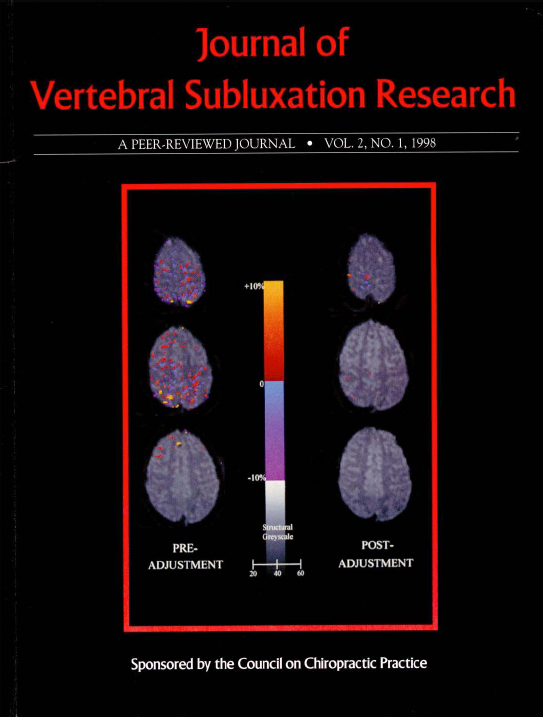Functional Magnetic Resonance Imaging: About the Cover (cover picture)
/About the Cover: Functional Magnetic resonance Imaging (fMRI), which measures the relative presence of oxy-hemoglobin, has gained attention as a non-invasive medium through which high resolution images of the brain and other tissue may be acquired. This technology may provide a useful assessment of cortical changes following chiropractic intervention. Images of the patient depicted on the cover, on the left, reflect cortical activity (lighted areas in the parietal cortex, frontal cortex areas 9, 10; visual association areas 19, 37, and 39) associated with the learning process of a "novel" muscular maneuver of the foot. Images on the right reflect cortical activity following a Network Spinal Analysis (form of chiropractic) adjustment session, taken approximately 20 minutes after the first set of images, involving the same activity. The decrease in "lighted" areas before and after the adjustment session suggests that less cortical "planning" or "activity" is associated with the "novel" foot maneuver. Thus, the ability of fMRI to visualize changes in cortical activity may play a significant role in elucidating the consequences of vertebral subluxation correction on neurological function.
Functional Magnetic Resonance Imaging: About the Cover (cover picture). Journal of Vertebral Subluxation Research. 1998;2(1):Cover.


